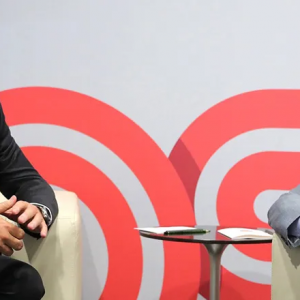On the 9th of November, 2016, in the wee hours of the morning, the news networks proclaimed Donald J. Trump the president-elect of the United States. From my vantage point, I watched hundreds of Berkeley students on Sproul Plaza collectively react in unmitigated horror as the man whom they reviled so personally claimed the highest political office in the world. Almost immediately, the crowd agreed on the consensus that it was the “racist” white men who had elected Trump and that women and minorities, persons of unimpeachable character, had to rise up to prevent such a horrific tragedy from happening again.
In rebutting Linda Hirshman’s piece, one must understand that her opinion is a crystallization of the opinions of the crowd that I saw in Berkeley that night. She was one of four left-wing writers who wrote an opinion piece for The Nation to explain why the American Left was not able to prevent Donald Trump’s ascent to the presidency. Hirshman counters the growing calls on the Left to abandon identity politics, that is the promotion of the interests of one identity group over another, citing historical oppression of that group as justification. The very first sentence of the piece cites the necessity for the Left to appeal to “not-white-men” for its ideological success. The very reference to color in this statement demonstrates the political bankruptcy of modern American liberalism. It reflects its inability to articulate differences in terms of policy, seeking instead to conduct discourse solely in terms of identity.
One must wonder why so many people mindlessly repeat talking points on “white privilege” and “institutionalized racism” among other sacrosanct terms. If you walk around the Berkeley campus, you will notice that each wall has close to a thousand posters of campus bureaucrats reassuring people of color or members of the LGBT community or some other victim group that they are “allies” of these groups. At any point of time, you will notice dozens of campus bureaucracies, like the Office of Equity and Inclusion, that are solely designed to tend to the delicate sensibilities of these groups and have nothing to do with the acquiring a valid college education. Given the fact that no person needs an ally unless they are in a war, I must wonder whether some have a material interest in telling certain groups of individuals that they are the subjects of victimization by some other group. What job would all the diversity bureaucrats across campus be left with if this campus valued the diversity of thought over the diversity of skin melanin concentrations? When one has to judge a host of bureaucrats claiming to minister to the broadly defined needs of particular classes of people, one should presume self-interest over genuine concern. Besides, the narrative of systemic discrimination presents a dual-edged sword for minorities who believe in it. If they achieve success in any field, it provides them with a societal ill to have triumphed over and if they fail, it provides an opportunity to diffuse blame on society at large rather than the individuals themselves.
Hirshman claims that the American story has been about extending liberties guaranteed in the American constitution to persons other than white males and that it has “almost always been the Left” which has been at the forefront of these breakthroughs. While I certainly agree that American history is plagued with horrific racism which should not be replicated in the present, the idea that the Left has been valiantly fighting the Right for the rights of the oppressed is patently ridiculous. The same history that consists of shameful examples of racism is also studded with prominently liberal politicians and organizations stoking flames of bigotry. Woodrow Wilson, a self-proclaimed “progressive” president single-handedly resegregated the federal executive and screened the explicitly racist film “The Birth of a Nation” in the White House. The only four-term president in US history, Franklin D. Roosevelt, may be known to liberals as a noble proponent of the Social Security Act but it may also interest them to know that he also appointed an active Klansman to the Supreme Court, Hugo Black. He also appointed James F. Byrnes, a man known in the Senate for his vociferous opposition to anti-lynching legislation, to the Supreme Court. He also deliberately excluded African-Americans from most New Deal policies by excluding agricultural and domestic laborers, fields dominated by African Americans at the time, from the benefits of those policies in order to avoid resistance from the virulently racist Southern Democrats. Today, liberal Democratic politicians may run to Planned Parenthood for its valuable endorsement. Some in the Democratic Party, like Hillary Clinton, may also praise its founder, Margaret Sanger. However, none of them would dare point out that she was an integral part of the American eugenics movement and uttered pearls of wisdom like, “It is said that the aboriginal Australian, the lowest known species of the human family, just a step higher than the chimpanzee in brain development, has so little sexual control that police authority alone prevents him from obtaining sexual satisfaction on the streets.” The religion of identitarian politics, through its near monopolistic control on mass media, universities and Hollywood, may disseminate propaganda like what Hirshman articulated on race, but it should be mentioned that, whenever those who advocated for left-of-centre ideas have been granted an opportunity to indulge in white majoritarianism for political gain, they have not let it go.
Hirshman then notes the growing voices in the Democratic Party calling for it to move away from identity politics to issues of income inequality. She then dismisses those calls claiming that such inequality is intrinsically tied to race and that racial homogeneity is the reason why Europe has been able to tackle the issue of income inequality better than the US. I beg to disagree. In a capitalist society, the closest one can come to measuring well-being is by measuring household incomes. In the past 12 months, the median household income in 2015 inflation-adjusted dollars of Indian-American families, not exactly an ivory white demographic, has been the highest at a whopping $101,390. European-Americans and Australian-Americans, who represent a whiter demographic, come in at seventh and fifth respectively, outranked by Taiwanese and Filipino Americans. The number of non-white groups that excel in this horribly white-supremacist country is truly staggering. It’s almost as if the institutions of this country were not designed to favor a particular racial or ethnic group and that those who push that narrative have other interests in mind.
These numbers suggest that the income divide today is based primarily on education, not on relative levels of melanin concentration in the skin. It is likely that a brown, Indian-American family in Silicon Valley, California, is doing significantly better financially than a family of white factory workers in rural Ohio. The unskilled jobs that, for so long, formed the base of the American workforce have fallen prey to automation, free trade and excessive immigration. This has led to a severe economic angst that so-called “progressives” had the prime opportunity to capitalize on in 2016 but chose to drive wedges on racial terms. President Trump seized the opportunity by railing on unfair trade deals, promising to impose steep tariffs on imports from other nations and to restrict the deluge of immigrants streaming into the country. As a result, he rests peacefully in the Oval Office while the “progressives” retreat to their abodes in academia, the press and the college campus to debate on whether they were racially divisive enough or not.
The piece concludes by citing the defeat of former Maricopa County Sheriff Joe Arpaio and former North Carolina governor Pat McCrory as evidence that identity politics work when they are utilized. While these are isolated examples, the broader national trends are ominous for the Democratic Party. Today, they occupy a meager 193 seats in the US House, 49 in the Senate and 16 governorships across the country. It is true that changing political trends could affect those numbers, but it is clear that the identitarian message of the Democratic party was soundly rejected in 2016. The issue of becoming a national majority once again is now in the hands of the Left- they could choose to tap into genuine economic angst at the heart of this country or resort to double down on divisions of identity. If they choose the latter, the man in the Oval Office can crack open a Coke bottle and recline on his armchair, for he isn’t going anywhere anytime soon.
Picture credit: PRIDE.com






Be First to Comment